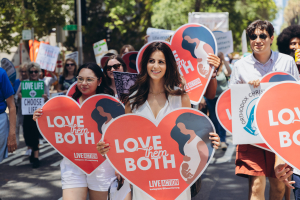Test Tube Meat Created by Dutch Scientists Costs $250K Per Burger
Scientists at the University of Maastricht in the Netherlands found a way to produce meat in a laboratory by growing it from stem cells picked from existing animals.
The in vitro meat is created using nutrient broth-filled Petri dishes, and in that way, the cells of just one animal could be potentially used to create the meat of one million animals. Hamburgers, hot dogs, and steaks could all come from “cultured meat” in the future.
The future might not be too far off either, according to Mark Post, a vascular biologist working diligently on the project.
"The first one will be a proof of concept, just to show it's possible," said Post to Reuters; "I believe I can do this in the coming year."
The “test-tube meat,” as some are aptly calling it, has the same essential DNA structure of meat produced from livestock today, although some of its qualities are different.
For one, the meat lacks the color and the texture of fat. Real meat taken from dead animals is filled with blood-that is what gives it its blood red color that transforms into a darker brown or pink after being cooked. Because the cultured meat does not require blood or fat, it comes out pale-colored, and lacks texture.
Researchers at the University of Maastricht feel it is a simple problem, though. By injecting some blood in the meat, and adding some lab-grown fat, the meat could be made to look practically the same.
The meat also doesn’t taste very good, according to testers, but Post thinks science has the solution to that too-perhaps even making the food healthier in the process.
"The idea is that since we are now producing it in the lab, we can play with all these variables and we can eventually, hopefully, turn it in a way that produces healthier meat," said Post.
The potential of the meat, however, could far outweigh its aesthetics.
Science writer Michael Specter visited the Netherlands to look at the scientists’ work, and explained to National Public Radio the necessity of their research.
"We have 7 billion people on the planet, and there will be 9 billion [people] by 2050," said Specter. "Those people need food… and they tend to eat better as they get wealthier. And better, unfortunately, means eating more like Americans - a lot of meat. And a lot of meat means a lot of water, a lot of grain, a lot of grass. And we don't have that much room for any of it."
The cultured meat helps solve this problem by providing an exponential amount of meat for everyone, or enough to cover all 7 billion people many times over. The university’s work could very well end world hunger.
That reality may not come too soon, though, as Post told Reuters that production of the meat is very expensive, costing up $250,000 for just one burger.
In addition, making more complicated kinds of meat, like steak, bacon, and pork chops requires more creative thinking about bone structure and feel of the food.




























